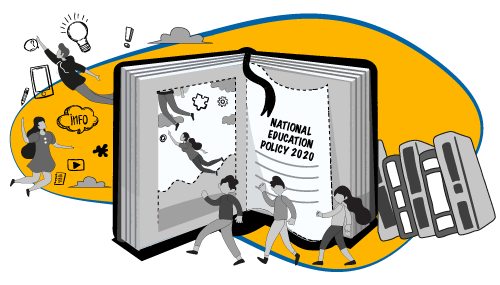National Education Policy 2020

In August 2020, the Ministry of Human Resources Development (MHRD) announced the National Education Policy 2020 (NEP 2020). Nearly three decades after the first education policy was announced in 1986 (and modified in 1992), the NEP 2020 proposes to rejig and reconfigure the entire education systems and its structure. The objective is to provide a multi-disciplinary, practical and holistic education to India’s youngsters. The policy seeks to be in line with the global education development practices which seeks to make available quality education in an inclusive and affordable manner. A look at the major highlights of NEP 2020:
- Structure: The present system of 10+2 years is proposed to be replaced by 5+3+3+4 years of education in school.
| Level | Age group | Class | No. of years learning |
|---|---|---|---|
| Foundational | 3 - 8 | Preschool / Anganwadi / Balvatika, Classes 1 to 2 | 5 years |
| Foundational | 8-11 | Classes 3 to 5 | 3 years |
| Middle | 11-14 | Classes 6 to 8 | 3 years |
| Secondary | 14 -18 | Classes 9 to 12 | 4 years |
- The above structure is inclusive as children in the age group of 3 – 6 are included. Previously, only children from Class 1 were included for the 10 +2 years education purpose. Such inclusion also places maximum focus on early childhood care and education (ECCE).
- To achieve this end, a National Curricular and Pedagogical Framework for Early Childhood Care and Education (NCPFECCE) for children up to the age of 8 will be developed by NCERT.
- It is proposed to train and develop high-quality ECCE teachers in Anganwadis. This shall be done in accordance with the curricular/pedagogical framework developed by NCERT. The ECCE shall extend to ashramshalas in tribal areas and all forms of alternative schools.
- A pupil teacher ration of 30:1 shall be implemented.
- At higher education level, it is proposed to focus on cognitive skills and learning outcomes. Higher educational institutions will eventually move towards a large, multidisciplinary universities and colleges. Such plan is proposed to be in place by 2030. Institutions will have the option to run online and or open distance learning programs. The policy also ensures gender balance in admission to HEIs. Professional education / courses shall emphasize on ethics and self-discipline. Impetus will be given to agricultural courses and adult literacy programs.
2. Curriculum: The curriculum is proposed to undergo a major rejig. The policy has suggested to reduce the content of curriculum and enhance critical thinking and skill development.
- In all stages, experiential learning will be adopted. This will include hands-on learning, arts and sports-integrated learning, story-telling-based pedagogy, among others as standard procedure within each subject, and their relations among different subjects.
- Arts and Sports integration in the curriculum is another major introduction as it has been done to enhance creativity, teamwork, self-initiative, self-direction, self-discipline, and responsibility.
- Greater flexibility in choice of subjects will be offered in the secondary school level. The distinction between ‘curricular’ ‘co-curricular’, ‘extracurricular’, arts, sciences, humanities, and vocational subjects will be blurred as all of these will be holistically merged into the curriculum.
- It is proposed to have semester or any other system that allows the inclusion of shorter modules, or courses that are taught on alternate days, to allow an exposure to more subjects and enable greater flexibility.
- Wherever feasible, it is proposed at least up to class 5 to teach subjects in home language / mother tongue. The 3-language formula will continue to be implemented and no language will be imposed on any State. The children will have the option of learning at least 2 Indian classical languages while foreign languages may be offered at secondary level. This will enable the children to be globally aligned and enhance their knowledge and aspirations. Syllabus will be published in Indian Sign language (ISL) and local sign languages to enable children with physical challenges to learn as well.
3. Teacher Training and development: Since teachers hold the key to shaping the children, the future of our nation, the policy seeks to plug the average quality of teacher education and training by enhancing the quality and standards of teacher training.
- It is proposed to also provide them additional perks / allowances such as housing closer to schools to attract and retain good quality teachers especially in rural areas. Teacher Eligibilty Test (TETs) will be enhanced and strengthened along with training techniques across all stages of schooling.
- A common guiding set of National Professional Standards for Teachers (NPST) will be developed by 2022, by the National Council for Teacher Education in its restructured new form as a Professional Standard Setting Body (PSSB) under the General Education Council (GEC).
- There will be restriction on transfers of teachers.
- Special certificate courses for Special educators / teachers will be provided to teachers to plug the vacuum of specialized teaching to children with special needs.
- The curriculum for teachers training will be certificate courses – an integrated B.Ed course / certificate ranging from 2 years to 4 years. It will be a multidisciplinary course graduate and Post graduate course with accreditation and grading. Shorter certificate teacher courses will be developed and imparted as well.
4. Regulatory Mechanism:
- Establish a ‘light but tight’ regulation and single regulatory authority for higher educational institutions.
- Maintain checks and balance on commercialization of education / educational institutions.
- The functioning of all the independent verticals for Regulation (NHERC), Accreditation (NAC), Funding (HEGC), and Academic Standard Setting (GEC) and the overarching autonomous umbrella body (HECI) itself will be based on transparent public disclosure, and use technology extensively to reduce human interface to ensure efficiency and transparency in their work.
- All education institutions will be subjected to audit and disclosure treating them as a ‘not for profit’ entity. Surpluses, if any, will be reinvested in the educational sector. There will be transparent public disclosure of all these financial matters with recourse to grievance-handling mechanisms to the public.
- Common minimum guidelines will be laid down for all education institutions whether they are public or private. Such guidelines will contain provisions relating to good Governance, Financial Stability & Security, Educational Outcomes, and Transparency of Disclosures.
5. Use of Technology: Use of enhanced technology in the field of education will only help the Digital India Campaign in transforming India into a digitally empowered economy.
- The policy aims to introduce / integrate technology at all levels of education. This is true for the emerging fields of artificial intelligence, machine learning, block chains, smart boards, handheld computing devices and using computer to keep track of the student development.
- The National Educational Technology Forum (NETF) will be created as an autonomous body to provide a platform for the free exchange of ideas on the use of technology to enhance learning, assessment, planning, administration, and so on, both for school and higher education.
- The education sector has been the hardest hit in natural calamities and unnatural circumstances such as wars, riots, epidemics, and pandemic. This necessitates alternative modes of quality education such as online school learning whenever and wherever traditional and in-person modes of education are not possible. To achieve this end, both teachers and students have to be trained and equipped. Online teaching / learning platforms will be strengthened and extended to all involved in the education sector.
- A robust mechanism to be put in place to identify and address all risks, threat and breach of data or information has online.
The higher learning
The NEP 2020 aims for India to have a world class, holistic and multi-disciplinary education systems in placed by 2040. The policy has some far-reaching positive effects especially in the areas of schooling. However, some features such as the 3- language learning is being viewed as a challenge. The success of this policy will vastly depend on financing. Higher investments by governments, private philanthropic participation and monitoring is required. Effective and co-ordinated implementation of this policy at various levels is the key to achieving this objective. Such implementation shall require effective governance and expertise of the highest governing / regulatory bodies. NEP 2020: the new normal in education.
For full text of the policy:
https://www.mhrd.gov.in/sites/upload_files/mhrd/files/NEP_Final_English_0.pdf

